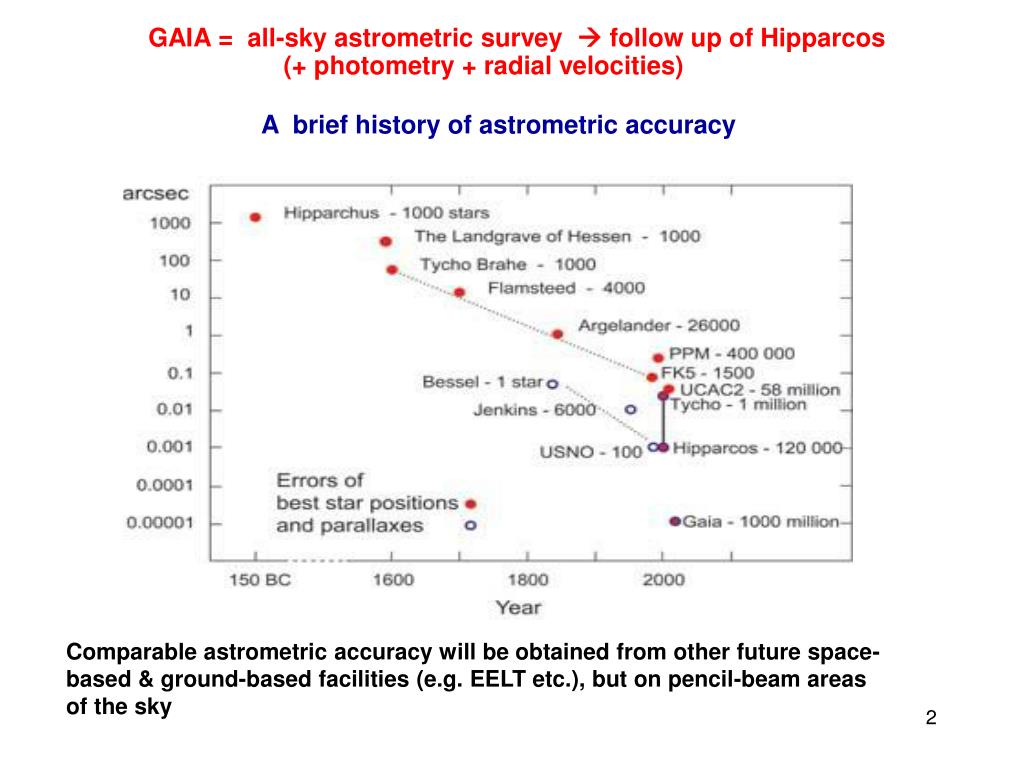

100% of fibres placed in simulation of cluster core The Hardware.Telescope, diameter WHT, 4.2m Field of view 2º ∅ Number of fibers 960 (plate A)/940 (plate B) Fiber size 1.3″ Number of small IFUs, size 20 x 11″x12″ (1.3″ spaxels) LIFU size 1.3′x1.5′ (2.6″ spaxels) Low-resolution mode resolution 5750 (3000–7500) Low-resolution mode wavelength coverage 3660–9590 (Å) High-resolution mode resolution 21000 (13000–25000) High-resolution mode wavelength 4040–4650, 4730–5450 coverage (Å) 5950–6850 25 September 2019 Nic Walton - WEAVE PIC - Padova 13
#Astrometry gaia Patch
~mid 2020 Back Illumination Blue Camera Slit Head Units Rotation ExchangerĬ Blue VPH Shutters B Exchanger D 25 September 2019 Nic Walton - WEAVE PIC - Padova Patch 12 Panels WEAVE instrument by the numbers
#Astrometry gaia Pc
★ P5 for long and step/stare phases: ~ 1 Million light curves at 20,000 high mass 1-15 MJ planets out to distances of 500 pc (1000+ planets in M dwarfs to ~100pc) P1+P2+P3: Exoplanet characterization and asteroseismology P4: M dwarf host star sample P5: Exoplanet statistics and stellar science North and South long stare fields (3+1 / 2+2 years TBD) Step and Stare fields (~few months each) (TBD) 25 September 2019 Nic Walton - WEAVE PIC - Padova 5 PLATO Samples Magenta: Kepler Green: K2 Galactic coordinates.

Stellar parameters like age and mass will be obtained by asteroseismologyĢ5 September 2019 Nic Walton - WEAVE PIC - Padova 4 PLATO Fields ~2,400 deg2 per pointing (provisional) Planetary masses will be determined by ground- based radial velocity measurements.
#Astrometry gaia plus
4 to 8 years operations plus post operationsĢ5 September 2019 Nic Walton - WEAVE PIC - Padova 3 PLATO PLATO 2.0: Rauer et al 2013 PLAnetary Transits and Oscillation of stars Goals: will detect and characterize planets down to Earth-size by high precision photometric transits around ~1M bright stars.

Gaia both finds exoplanets and characterises host starsĢ5 September 2019 Nic Walton - WEAVE PIC - Padova 2 PLATO (ESA M3).And it helps to know your target stars before you observe them.Finding and characterising extra solar planets requires a detailed knowledge of the host stars.PLATO begins its exoplanet hunt in 2026.Next major Gaia release (E)DR3 Q3/2020 and H2/2021.The first all sky astrometric catalogues (Gaia DR2) April 2018.Gaia released its first all sky data (Gaia DR1) Sep 2016.Gavin Dalton (University of Oxford) / Scott Trager (University of Groningen) WEAVE – Gaia – PLATO characterising exo-planets systems Nicholas Walton Institute of Astronomy University of Cambridge Gaia, PLATO and WEAVE: Astrometry, Photometry and Spectroscopy for Exoplanet Characterisation


 0 kommentar(er)
0 kommentar(er)
